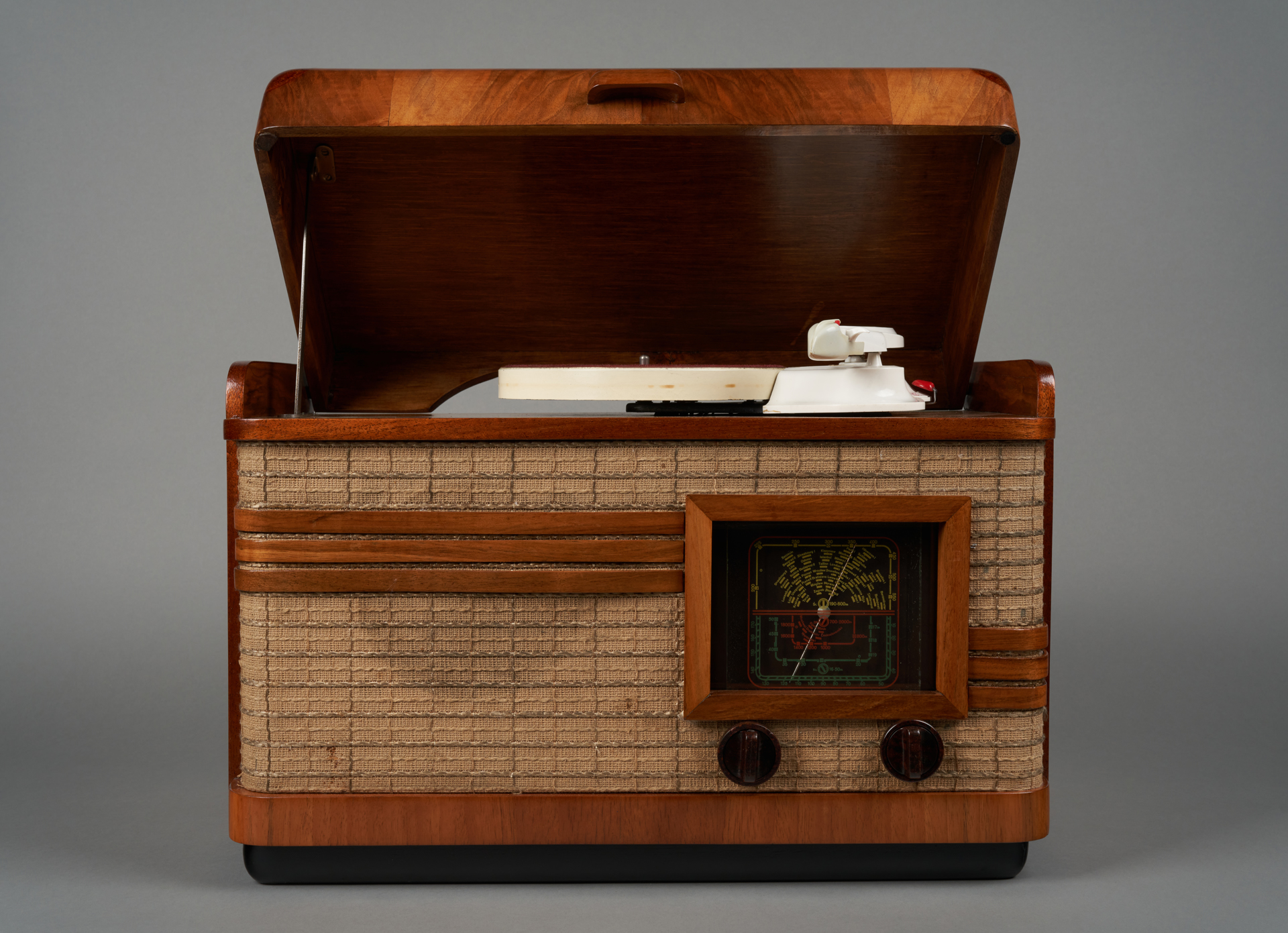
Polonez radio-gramophone
Zakłady Radiowe Diora, / 1956 - 1957Creator
Zakłady Radiowe Diora
Time and place of creation
Time:
1956 - 1957
Place:
Poland
The Polonez radio was manufactured in 1956-1958 by the Dolnośląskie Zakłady Wytwórcze Urządzeń Radiowych w Dzierżoniowie (later renamed to Diora). The device allows reception of radio signals in the short, medium, and long wave bands. It is the first Polish radio receiver with a built-in electric gramophone. It is a six-circuit superheterodyne equipped with four vacuum tubes, one of them acting as a rectifier. The design of the Polonez is a developmental version of the Mazur radio.
The built-in GE-56 electric gramophone (with the drive applied on the edge of the turntable), made by the T-4 plant in Łódź, allows playback of microgroove and normal groove records. When the electric gramophone appeared it became possible to reduce the mass of the adapter head, which resulted not only in the reduction of the pressure applied by the needle to the record surface from about 150 g to slightly above 15 g, but also enabled the use of reusable needles. After World War II, changes in the design parameters of adapters also affected the cartridges. Their sensitivity was increased, which enabled their miniaturisation. Piezoelectric cartridges appeared first and were then followed by magnetic ones. This allowed the introduction of records in which the groove width was reduced from 120 (normal groove records) to 65 µm, resulting in increased capacity of mechanical recording and thus extension of playback time.
In the Polonez receiver, the horizontal box layout already present in the Mazur model was maintained, except that the top wall of the housing was lowered by adding a lid on it to create a niche in which the gramophone was placed. Visually, the Polonez is a variant of the Pionier radio. It is from the Pionier that the layout of the front wall was taken, in which a magnetoelectric speaker was placed behind a dense fabric, and a square scale surrounded by a wooden frame was placed on the right. The front and top edges are softly rounded. The front wall is covered in fabric and adorned by three parallels strips of wooden slats. The corners of the lid were originally made of putty, probably in order to reduce production cost. Wooden surfaces are varnished. Originally, an evenly yellow scale was used in the Polonez, applied on glass using offset print. In earlier models, the inscription “Polonez” was vertically placed to the left of the scale, and in later models the inscription was changed to “Radiola”. In the receiver presented here, a three-colour scale from the Pionier was applied on top of the original, worn off scale.
Author: Filip Wróblewski
Polonez radio-gramophone
Zakłady Radiowe Diora, / 1956 - 1957Creator
Zakłady Radiowe Diora
Time and place of creation
Time:
1956 - 1957
Place:
Poland











